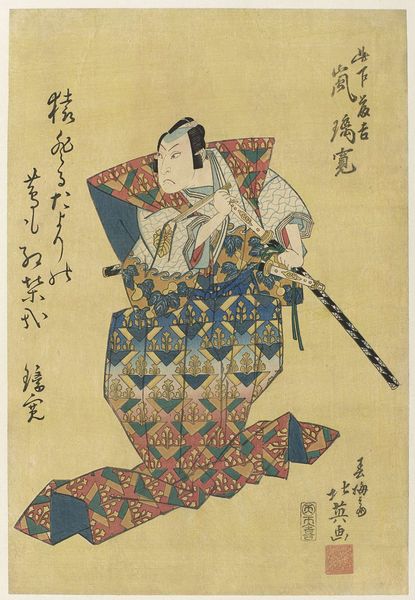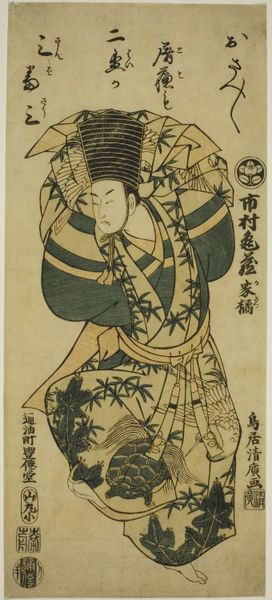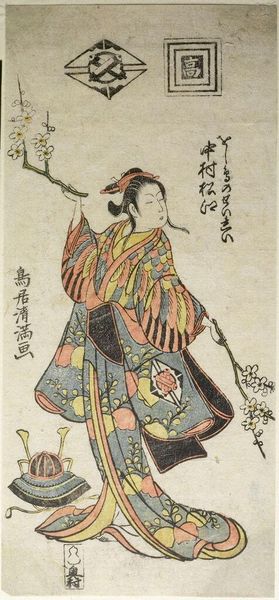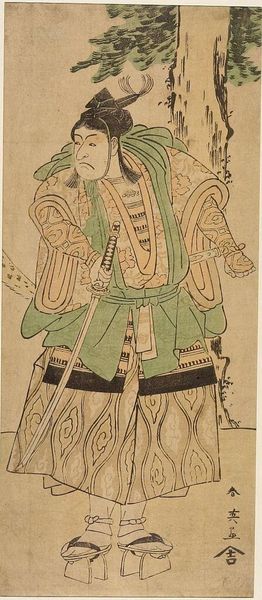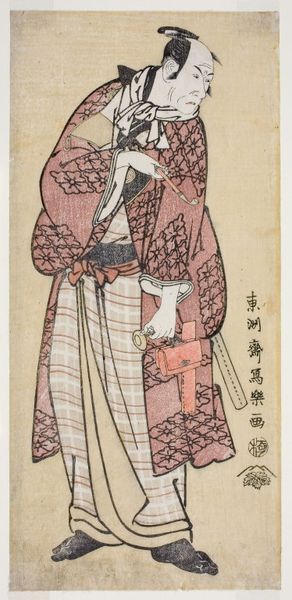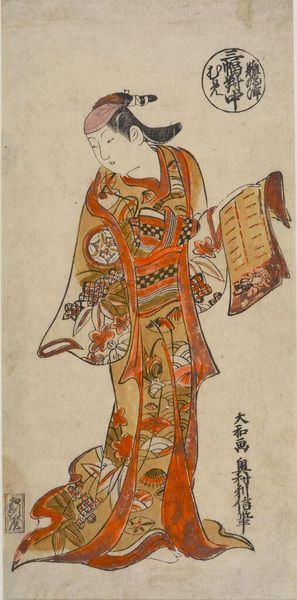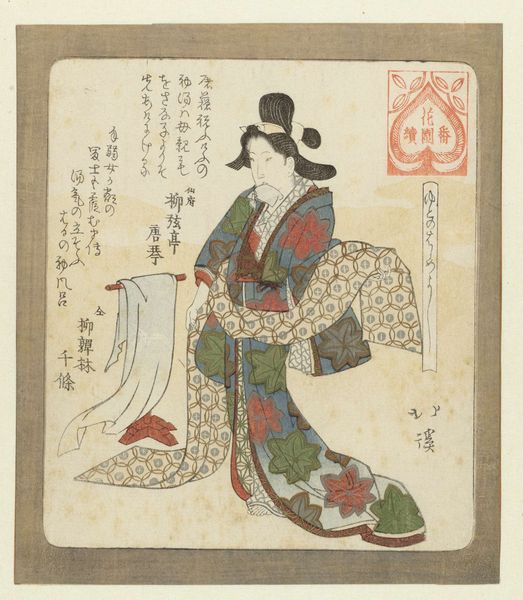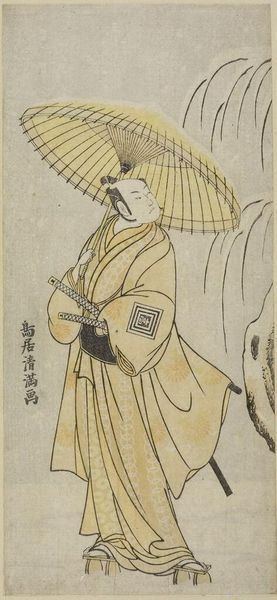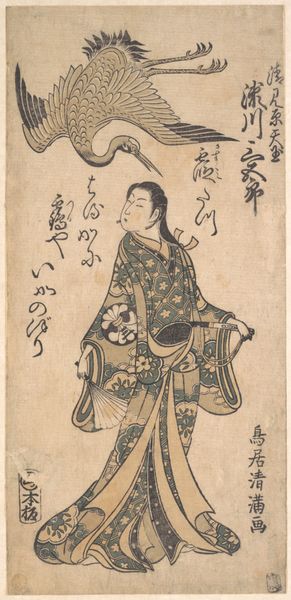
Actor Ichikawa Benzō as the Page Kichisaburō Possibly 1766
0:00
0:00
print, woodblock-print
#
portrait
# print
#
asian-art
#
ukiyo-e
#
figuration
#
woodblock-print
Dimensions: 11 5/16 × 5 1/8 in. (28.8 × 13 cm) (image, sheet, hosoban)
Copyright: Public Domain
Curator: This compelling woodblock print, possibly dating to 1766, is titled "Actor Ichikawa Benzō as the Page Kichisaburō." It's currently part of the collection at the Minneapolis Institute of Art, crafted by the hand of Torii Kiyomitsu. What are your initial thoughts on this ukiyo-e portrait? Editor: The figure emanates such a delicate strength. The stark lines carving out the figure within that limited palette generate an unusual degree of quiet confidence—it's both intimate and self-assured, but not entirely joyous. Curator: Indeed, let’s consider Kiyomitsu's choices here. This print falls squarely into the ukiyo-e tradition, think of it as a product within the landscape of the Edo period's flourishing popular culture, mass production techniques allowing more people than ever to have access to "art." Here, Kiyomitsu employed those readily available materials, those economical woodblocks and paper to cater to audiences eager to consume images of their favorite actors. Editor: I find myself wondering about the specific performance context—how this particular role speaks to the blurring of gender norms in Kabuki theater. These performances offered a space to explore identities and disrupt rigid social structures that often sidelined female perspectives. How was this gender transgression received by different classes in society, and were there dissenting or resistive readings happening through viewing? Curator: Kabuki definitely played a fascinating role, particularly when thinking about access and cost of entertainment! Kiyomitsu came from a family who essentially mass-produced images catering to that desire. Think of the entire workshop contributing to the various stages, from carving the woodblocks to carefully applying pigment by hand, a real assembly line process fueling demand. Editor: But what about the social critique embedded in this image? Are we to believe the figure truly consents? Are their feelings about the role a simple binary? There has been significant work done, notably by queer historians and feminists, on understanding such performance roles as an affirmation of liminal and ambiguous positionings against established norms, both liberating and also fraught with vulnerability. Curator: Exactly. Looking at it in that way underscores the power inherent in the *process* of representation itself. From raw materials like wood and ink to the labor divisions within the studio to reach mass consumption, it’s such a network of production behind a single print. It's so easy to lose that behind what appears to be just a flat surface! Editor: Thinking intersectionally, I appreciate that Kiyomitsu gives the viewer space to engage with this portrait from multiple standpoints. It's not just a passive aesthetic experience; it's a dynamic dialogue across art, society, gender, and power. Curator: I appreciate that added emphasis. By examining material production we gain crucial insights. We understand how this print serves not merely as an object, but as tangible artifact connecting art to industry, class, and economics, each one existing symbiotically. Editor: It’s a welcome and vital reminder of art’s capability for critical conversations.
Comments
minneapolisinstituteofart about 2 years ago
⋮
The actor Ichikawa Benzō as the page Kichisaburō in the play Yaoya Oshichi koi no edozome 八百屋お七恋江戸染, performed at the Nakamura Theater, in the fifth month of 1766
Join the conversation
Join millions of artists and users on Artera today and experience the ultimate creative platform.

